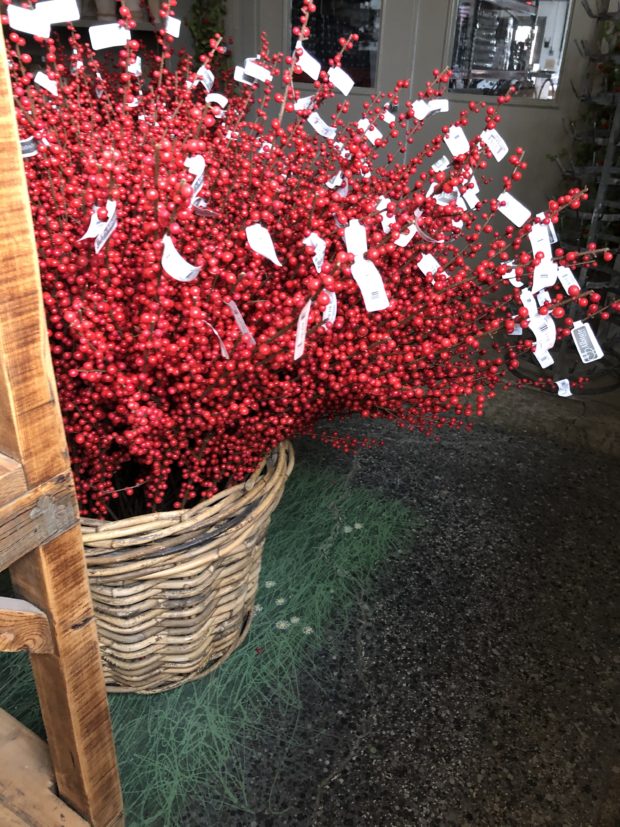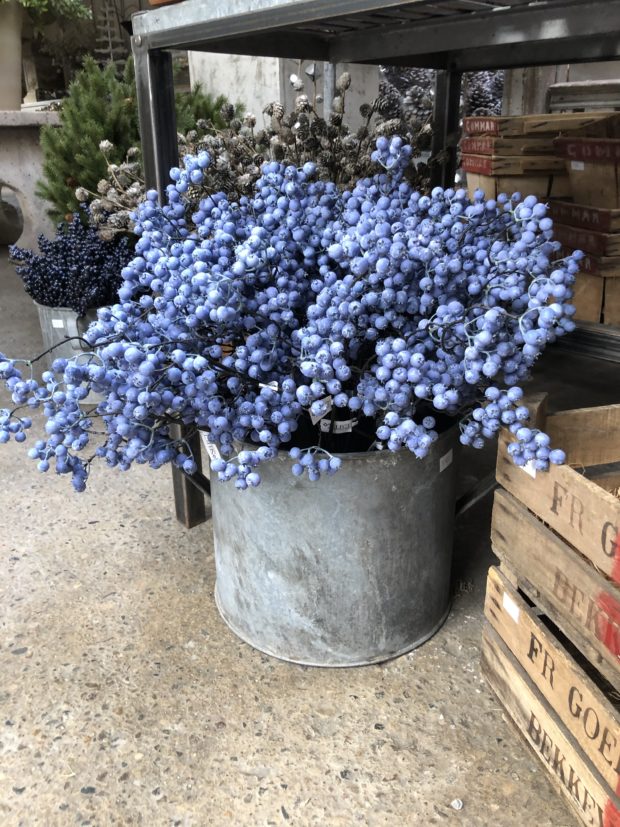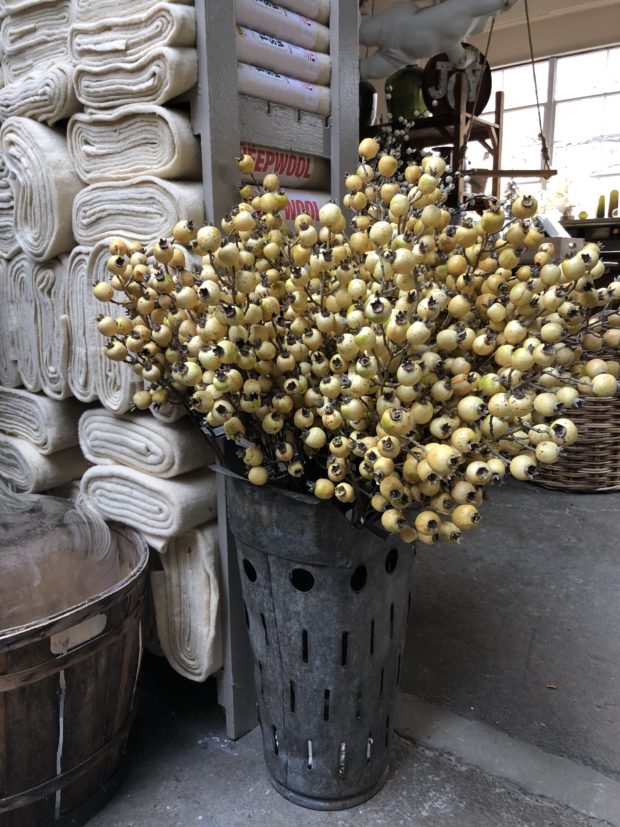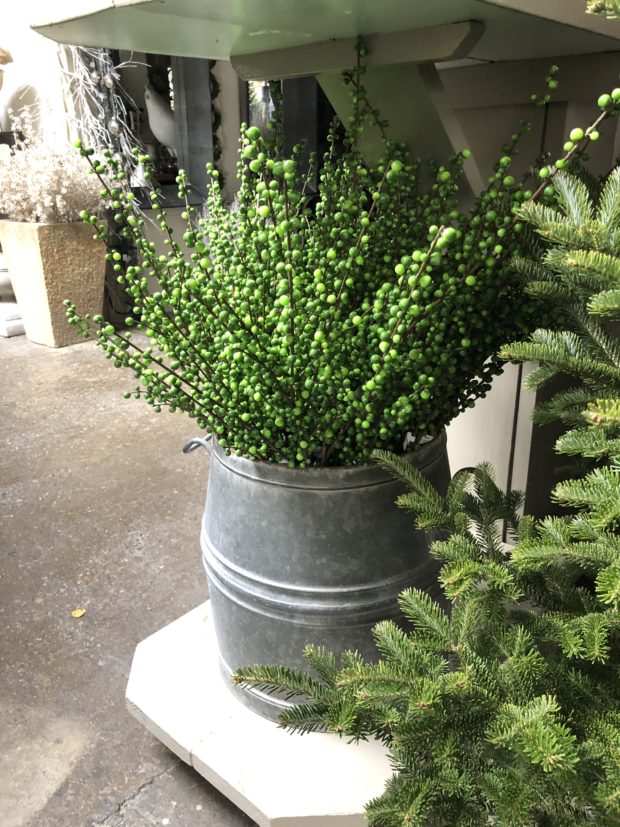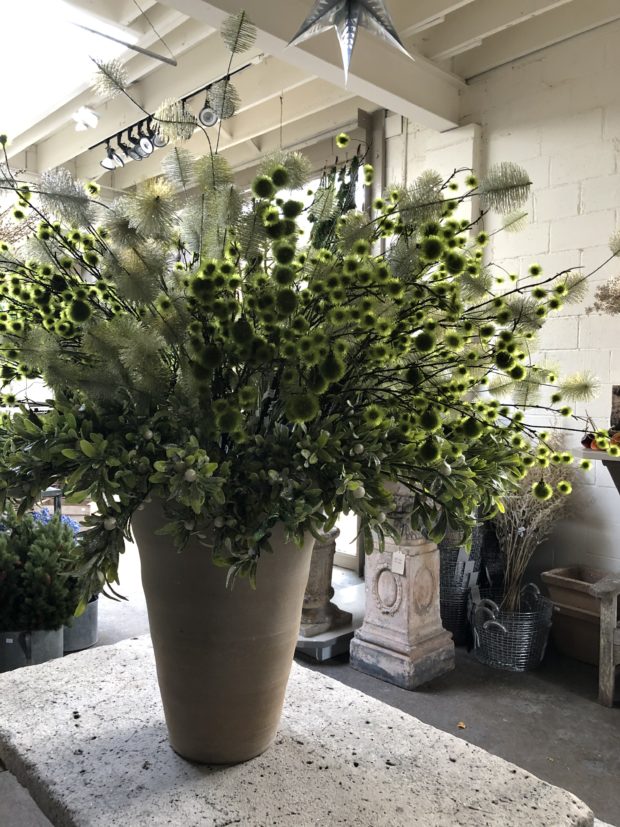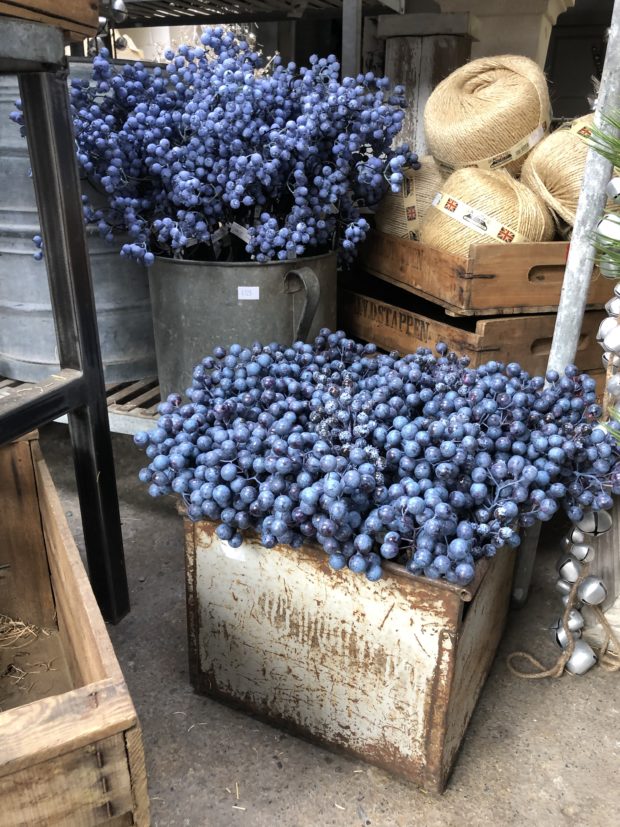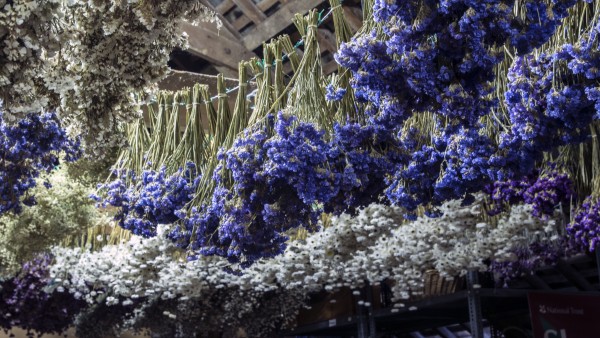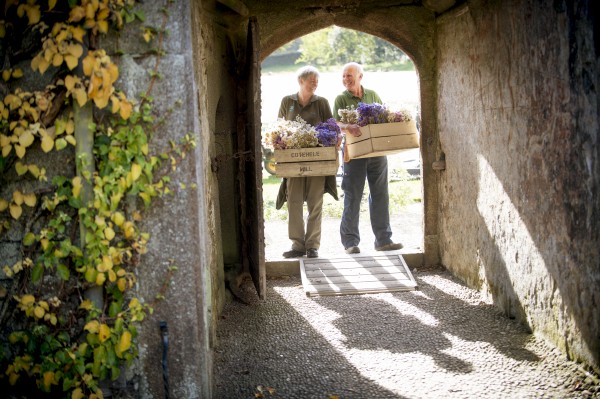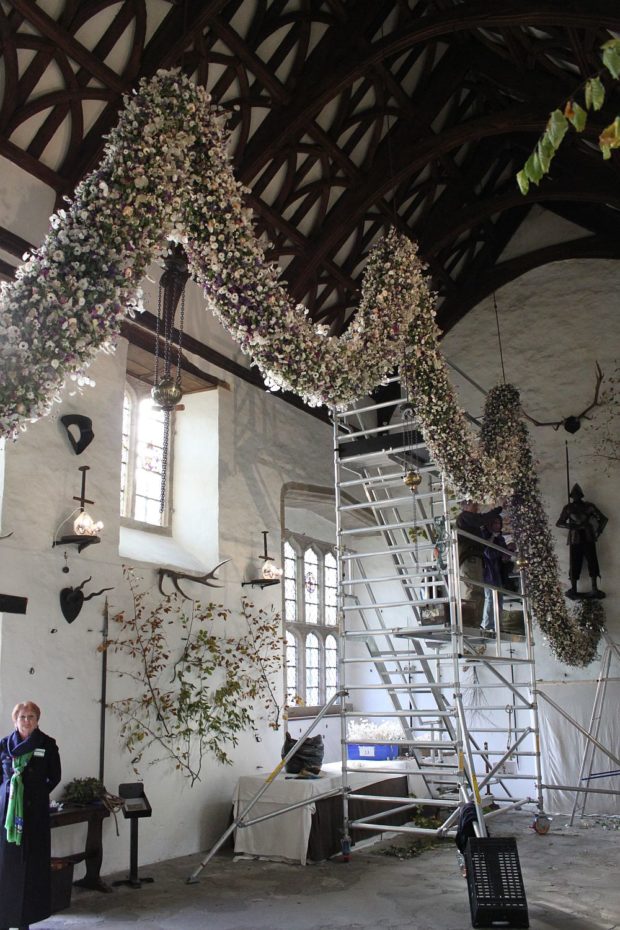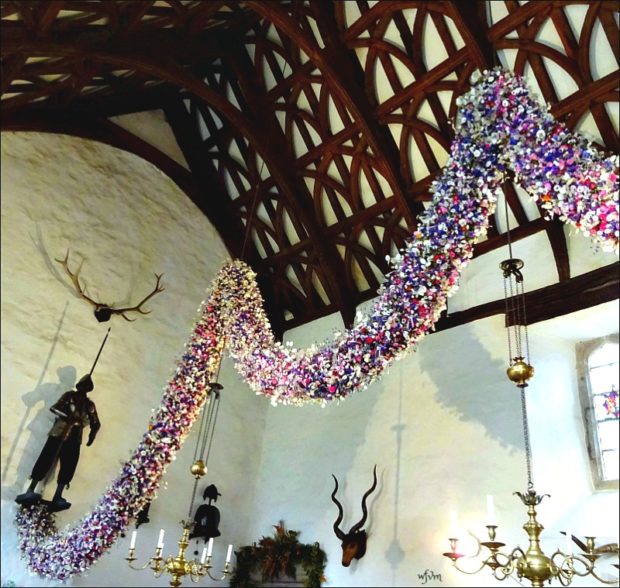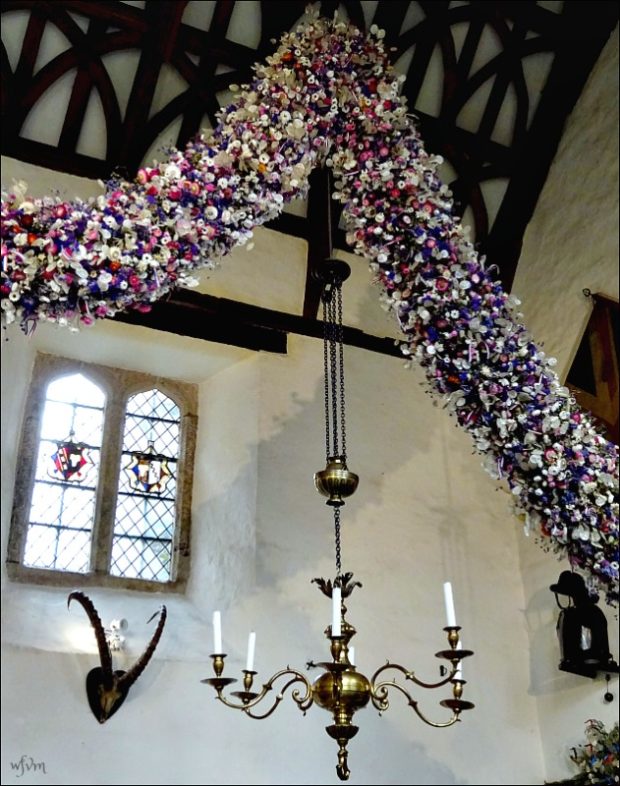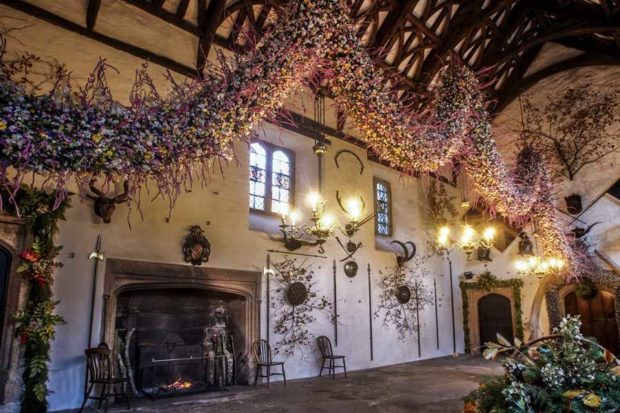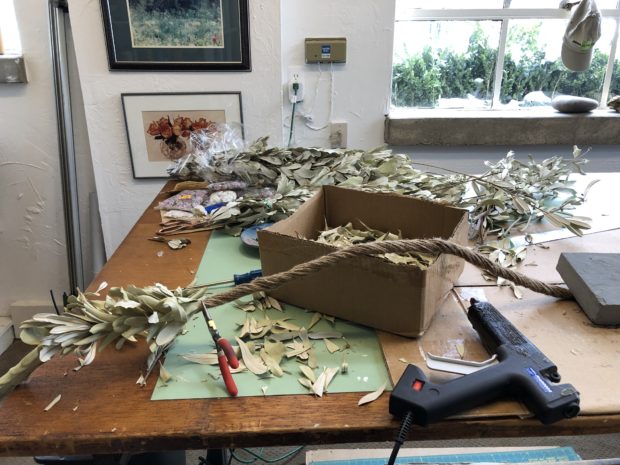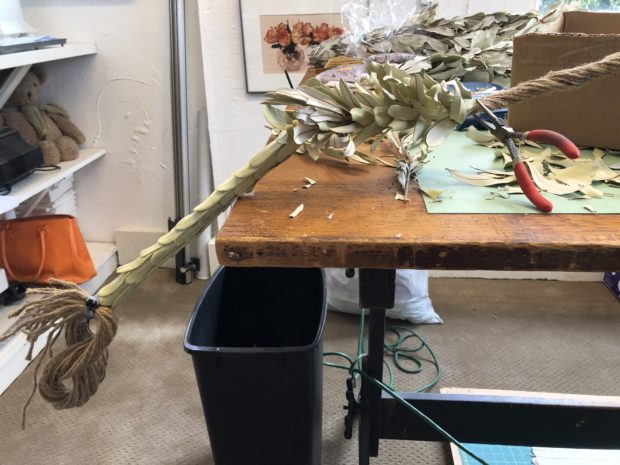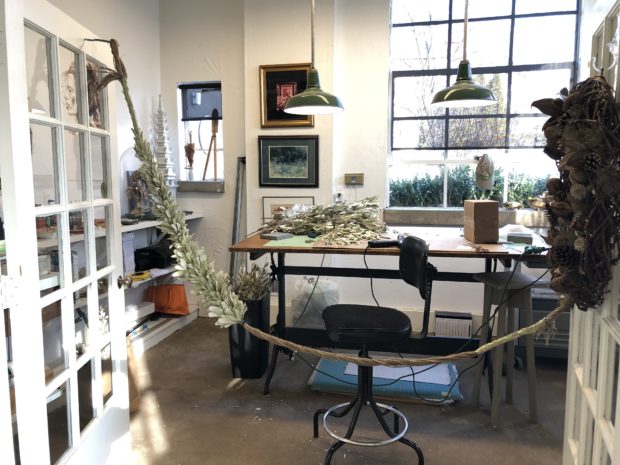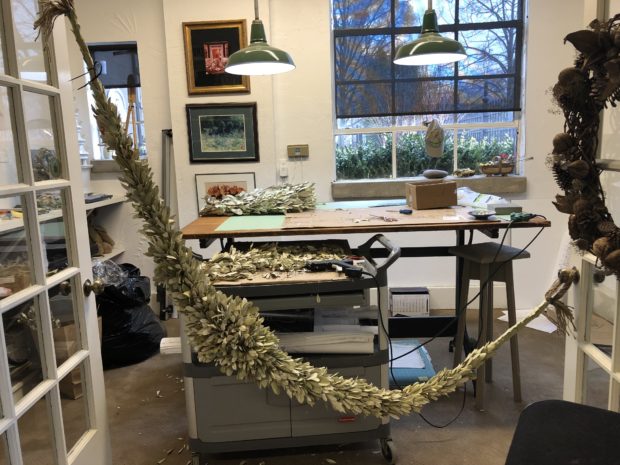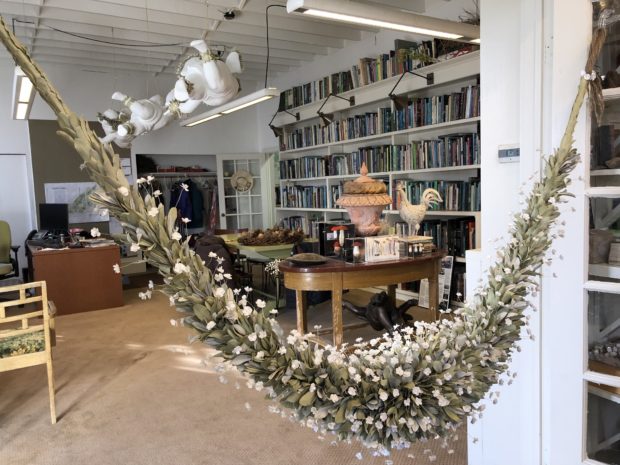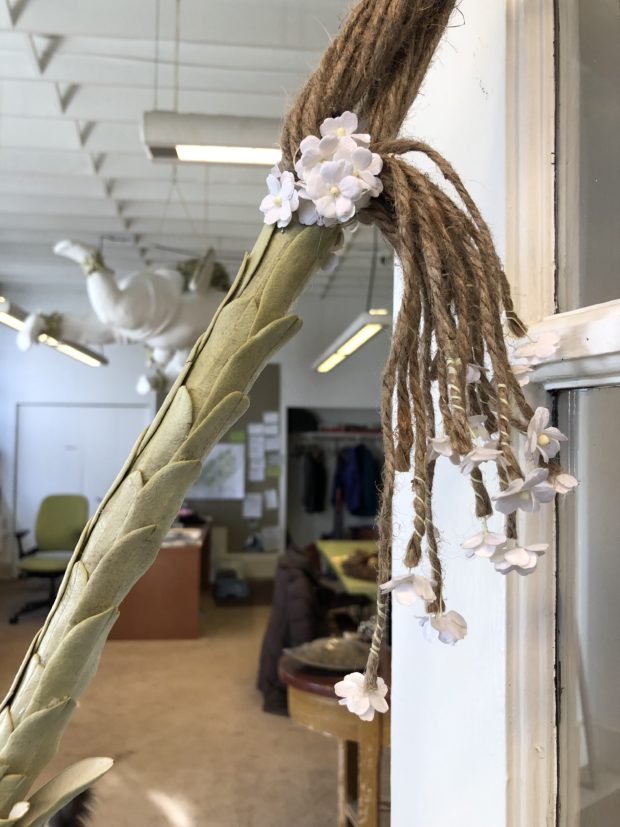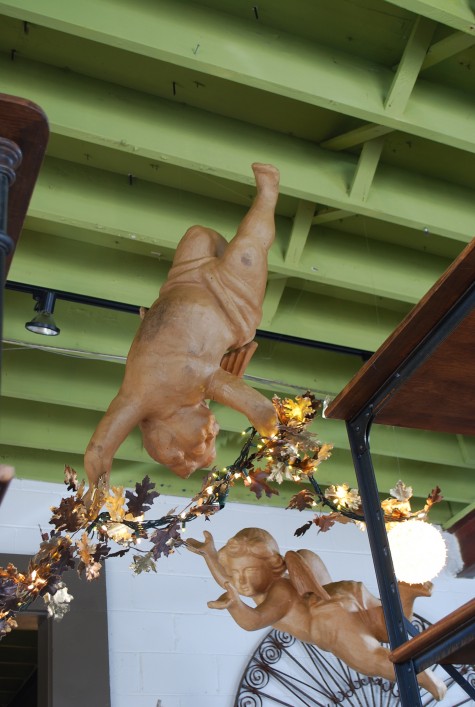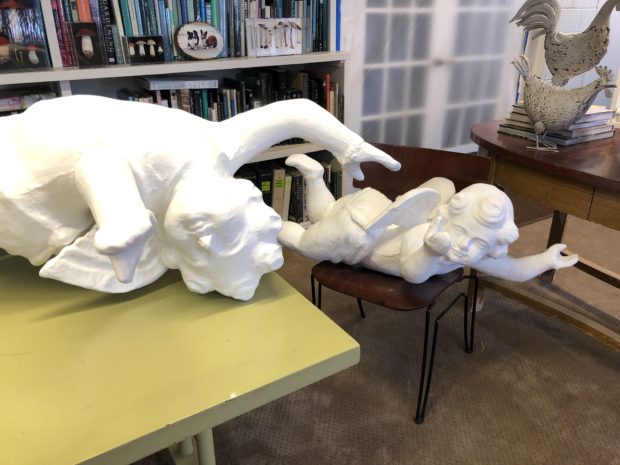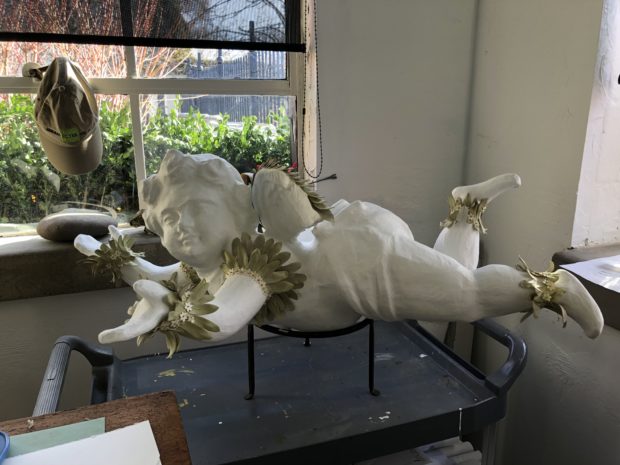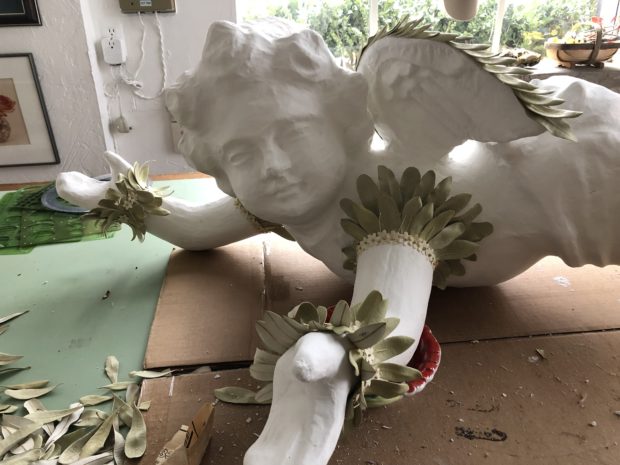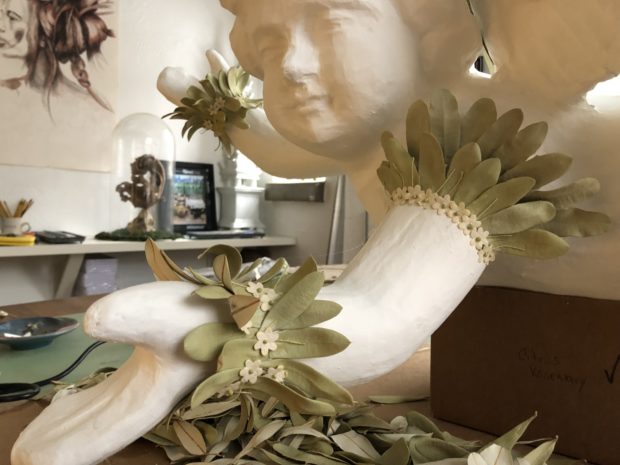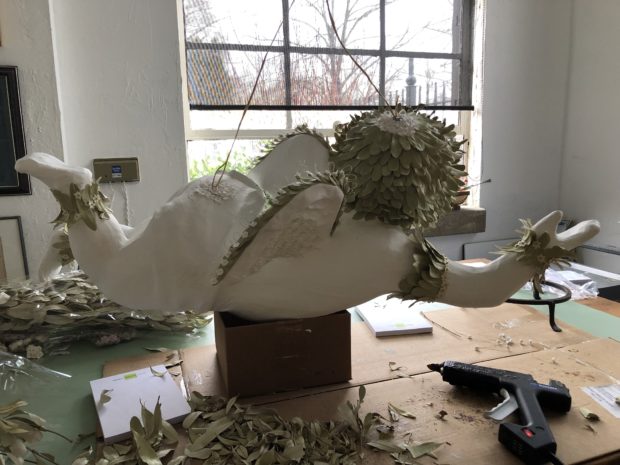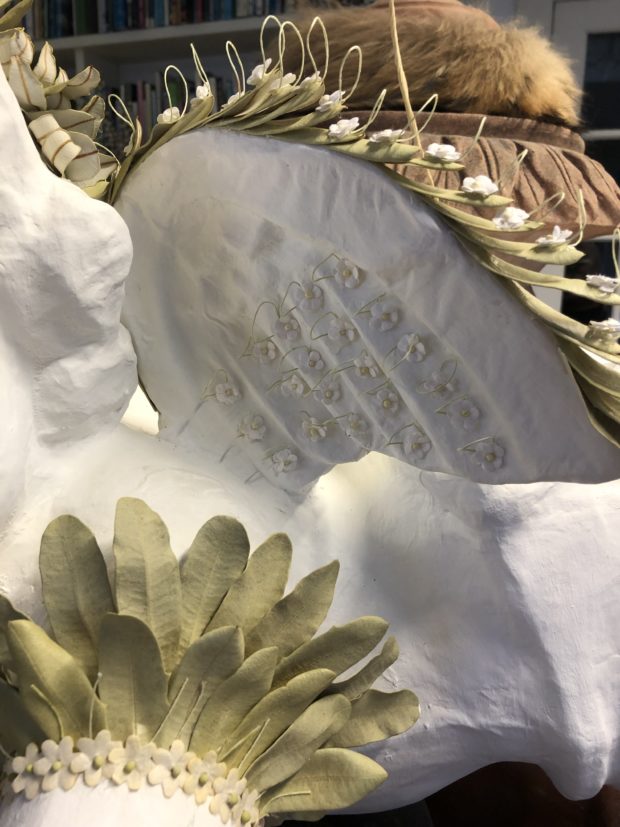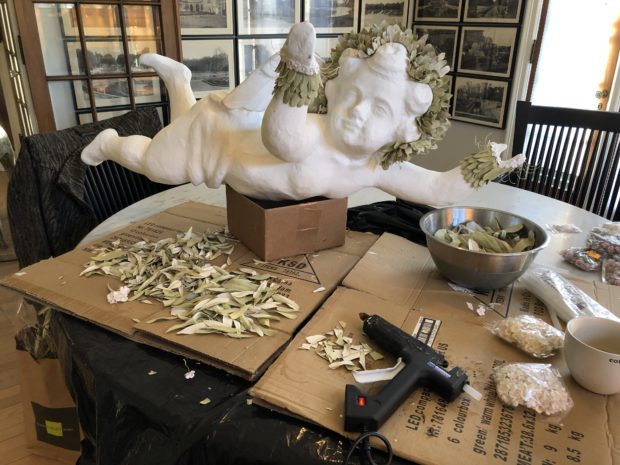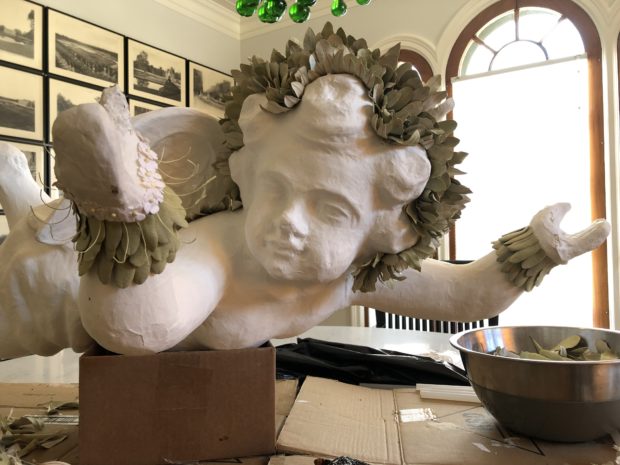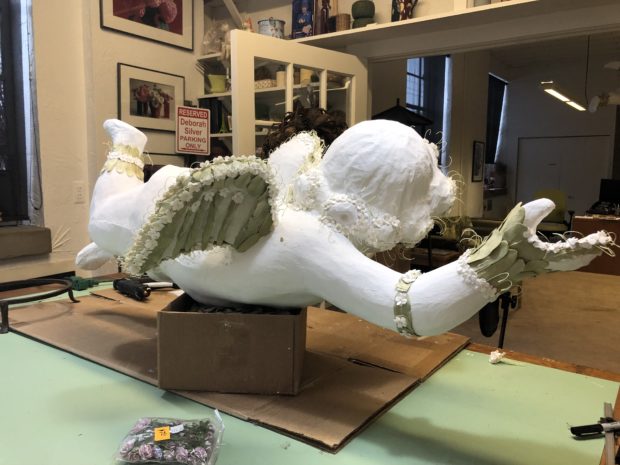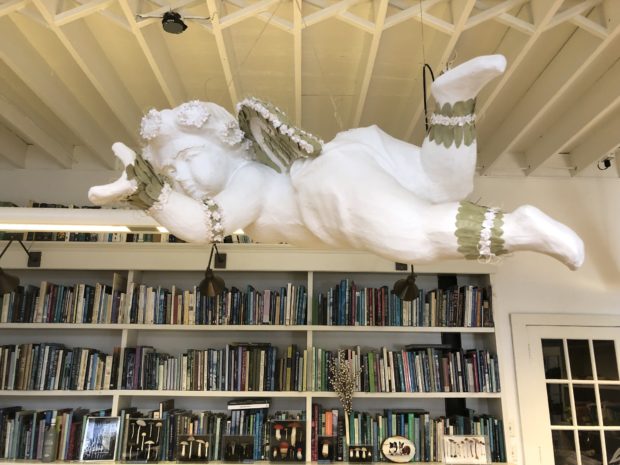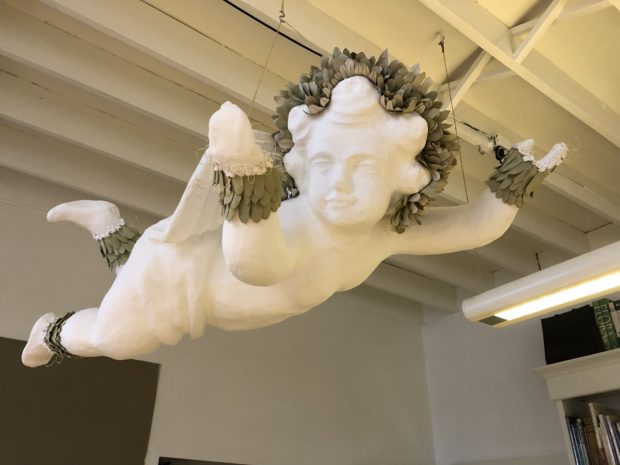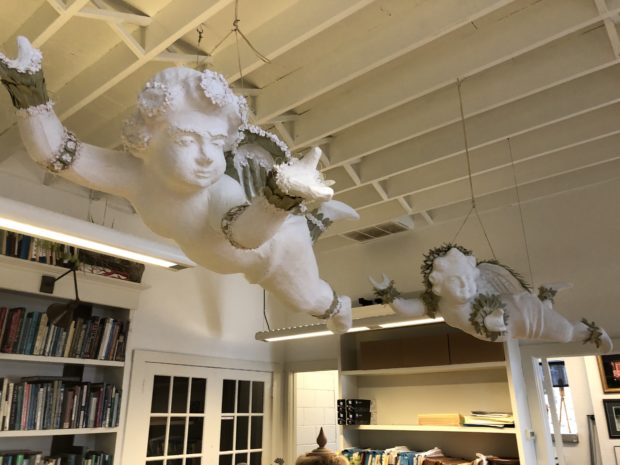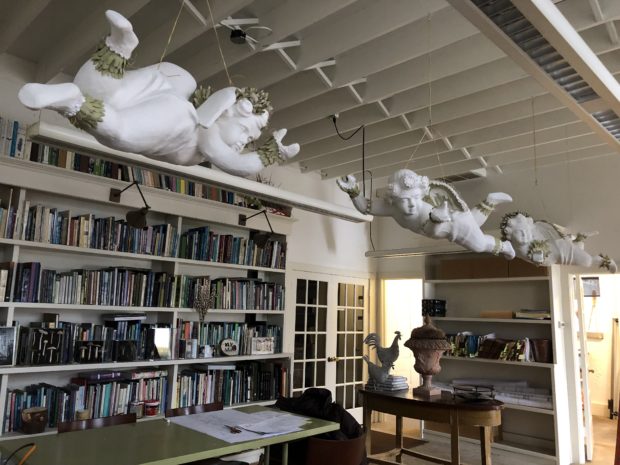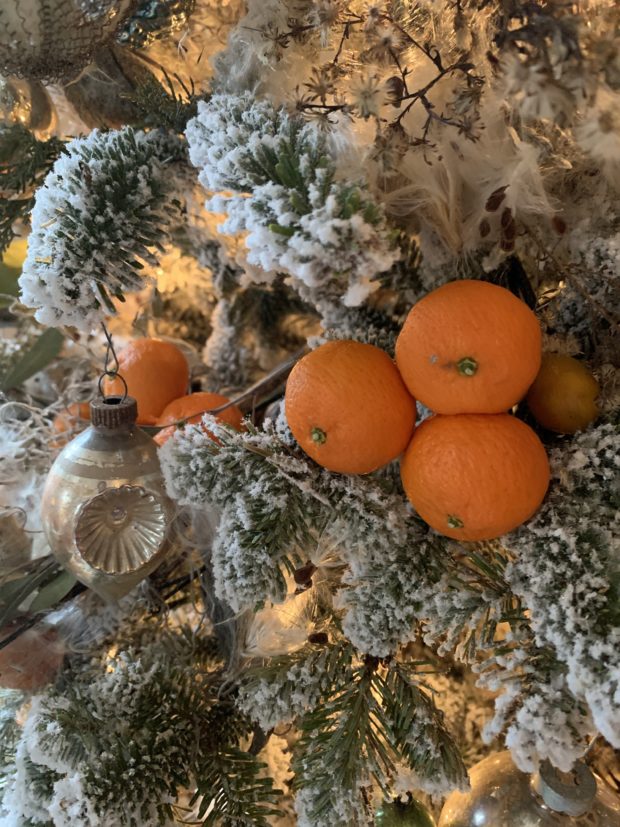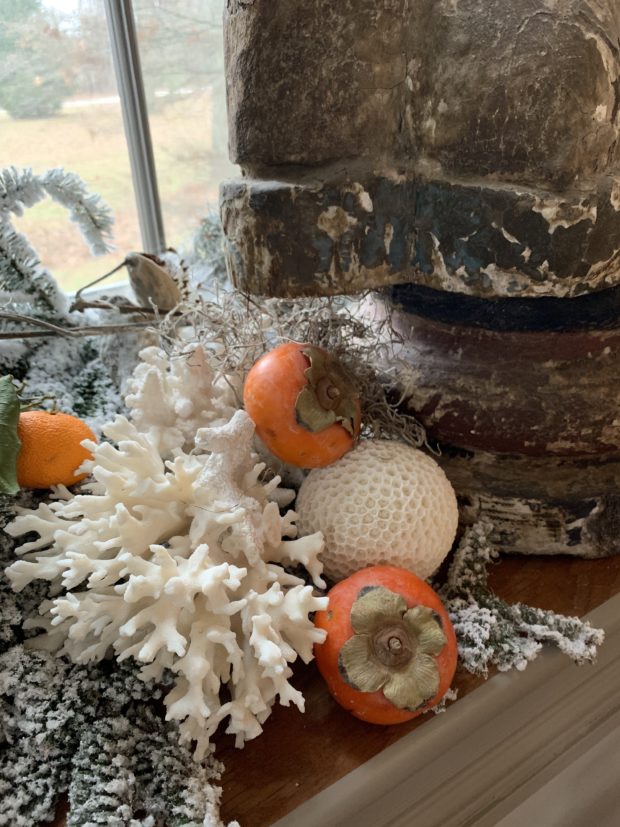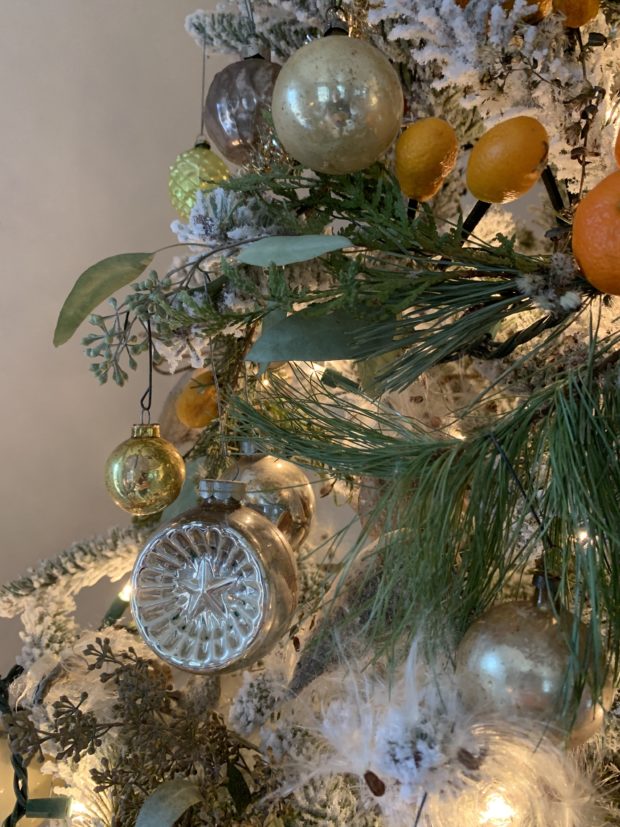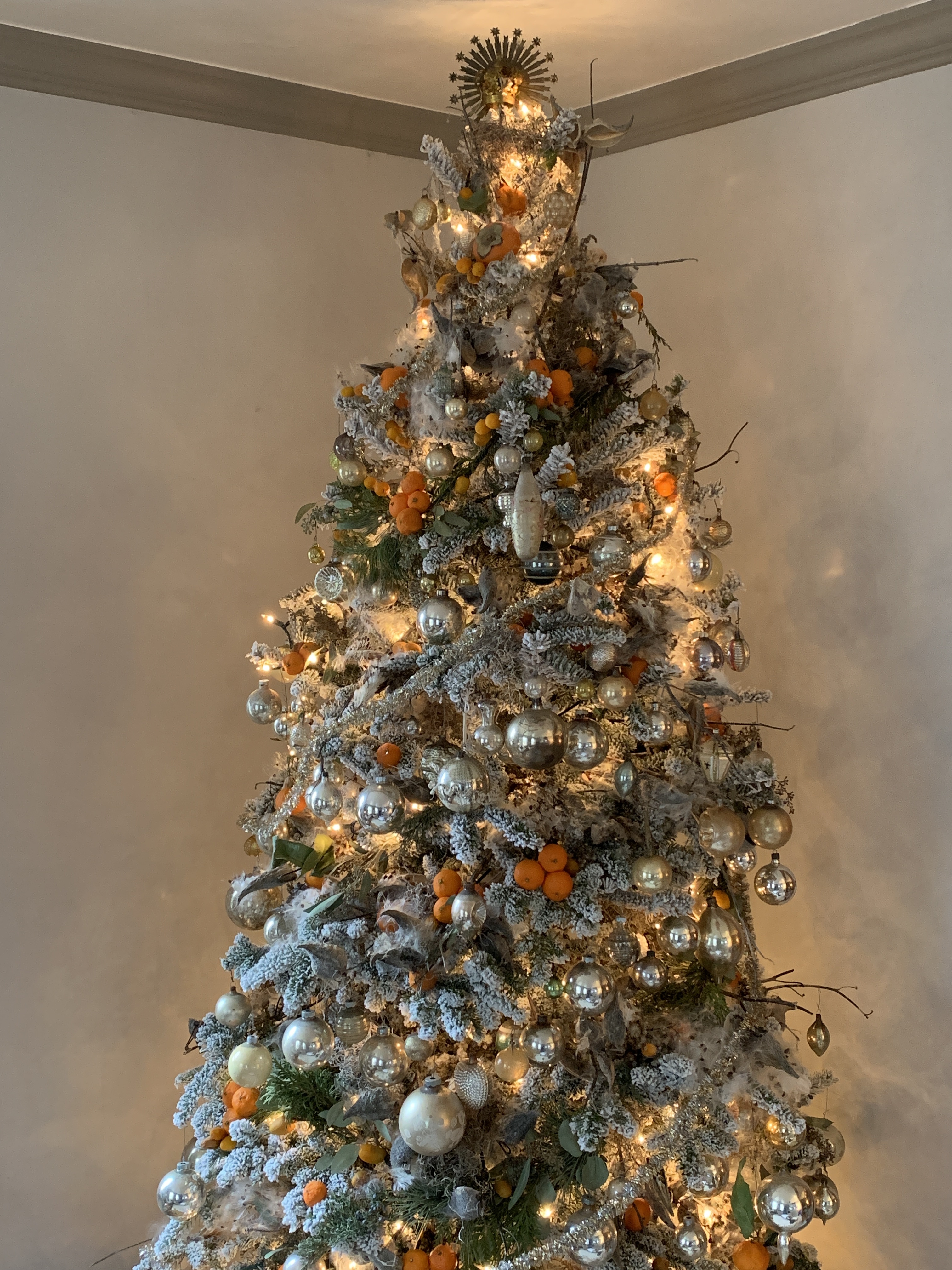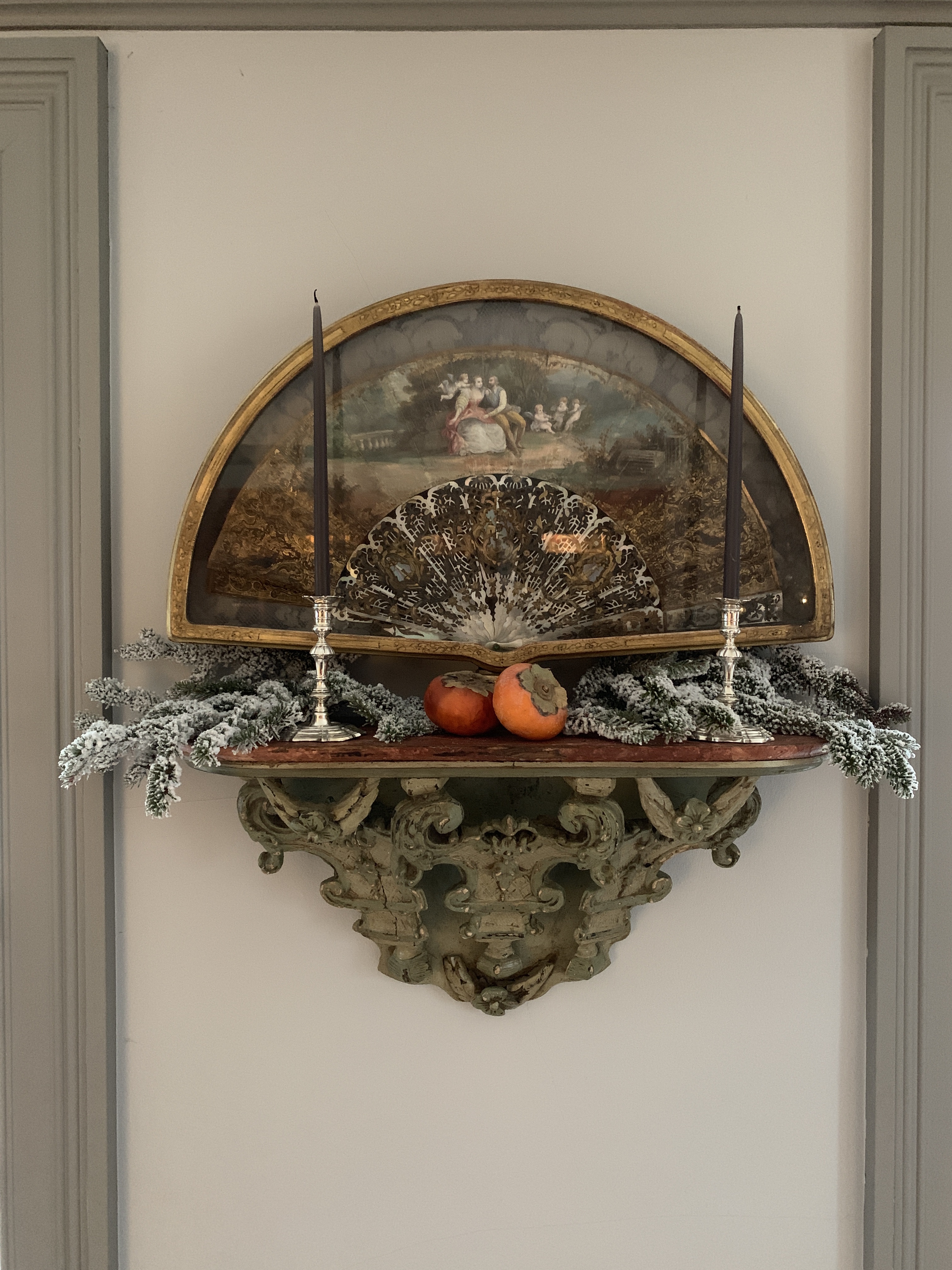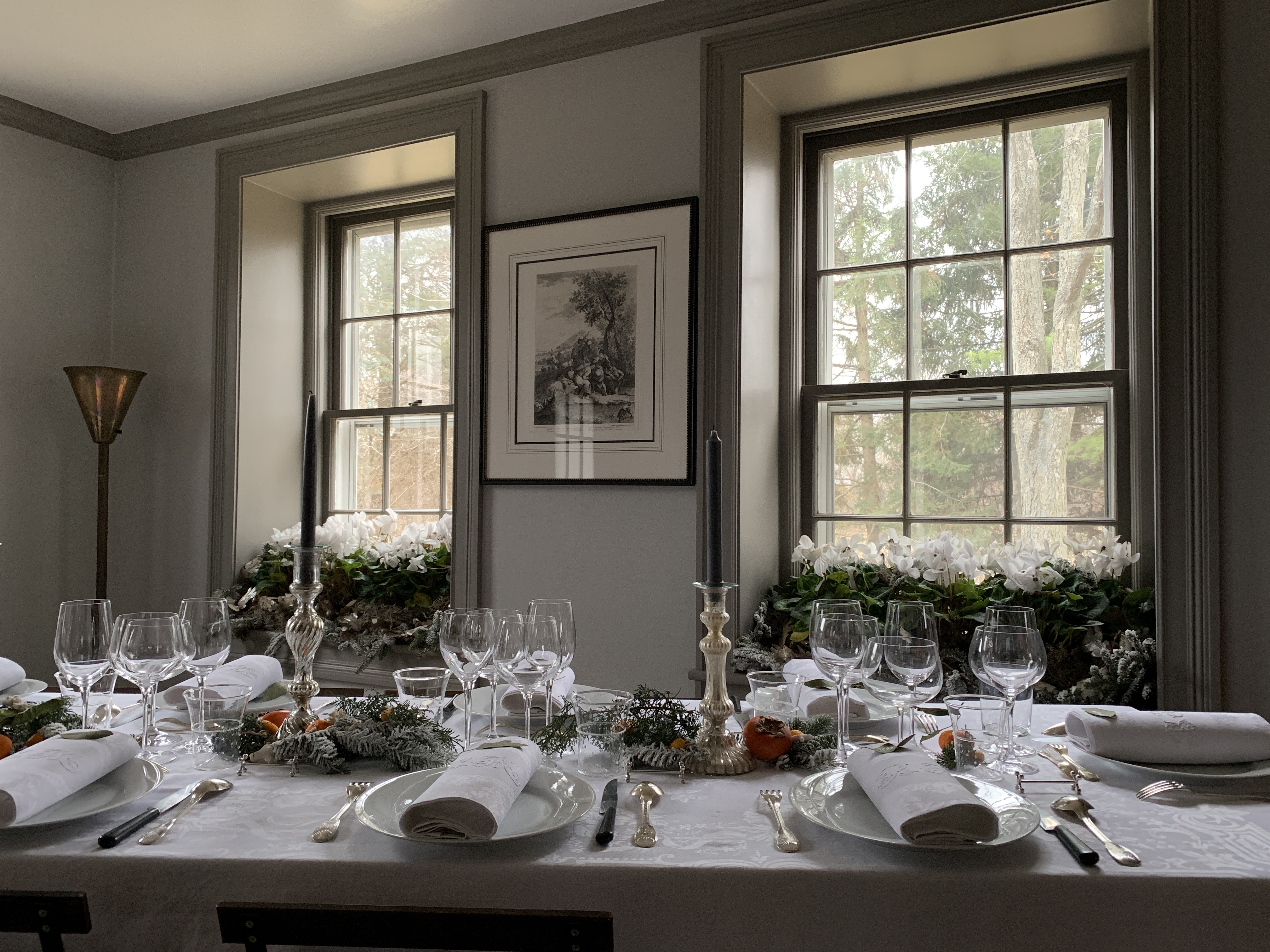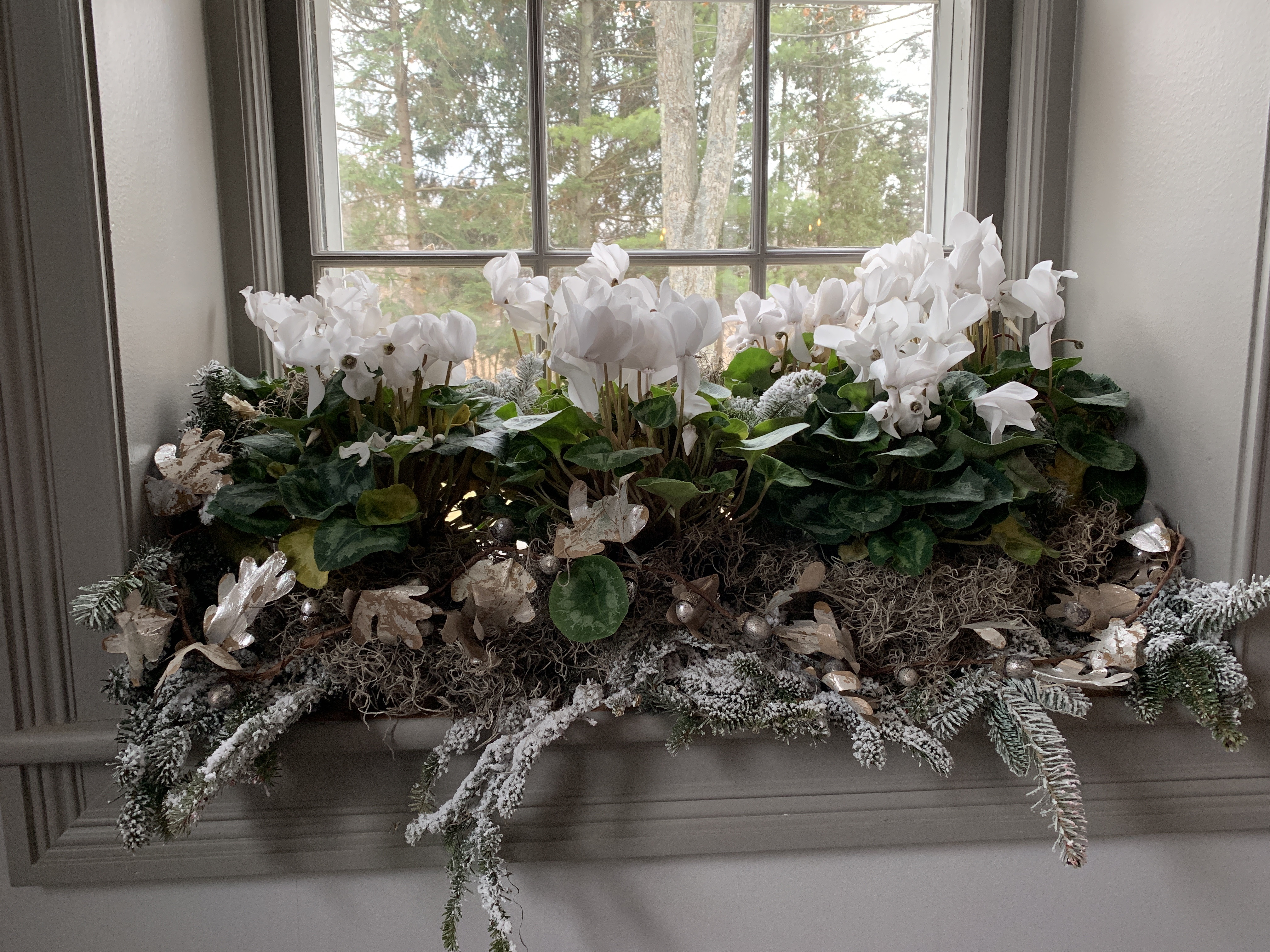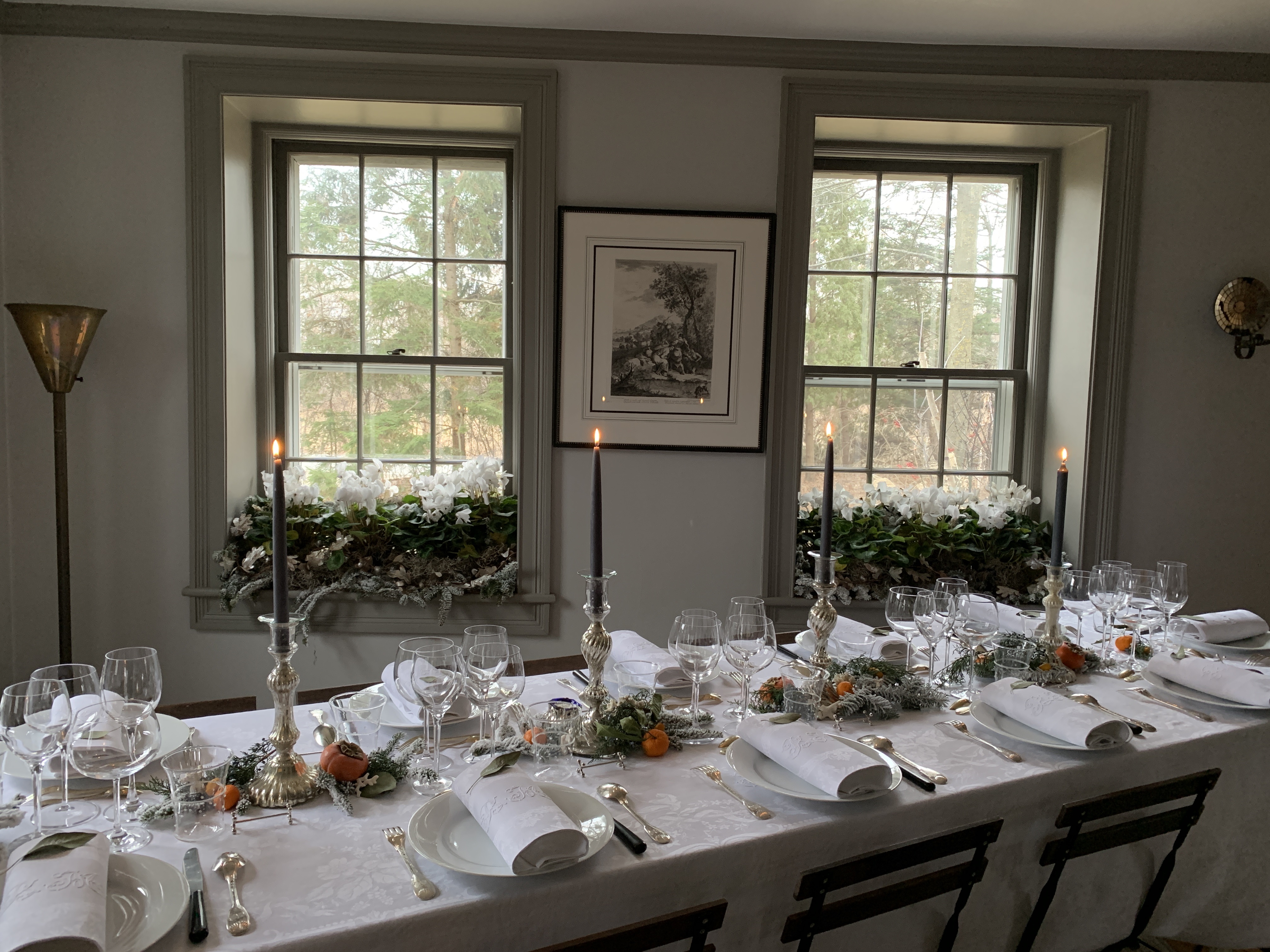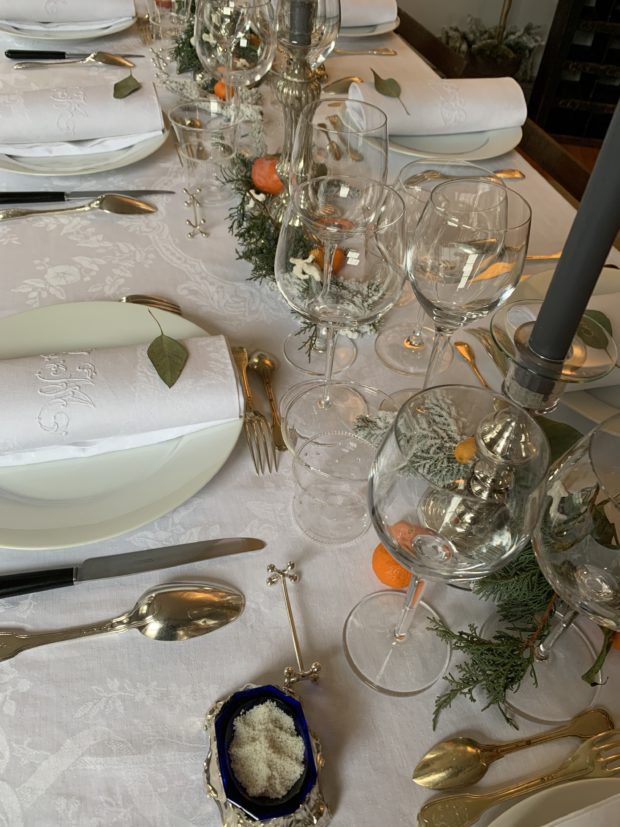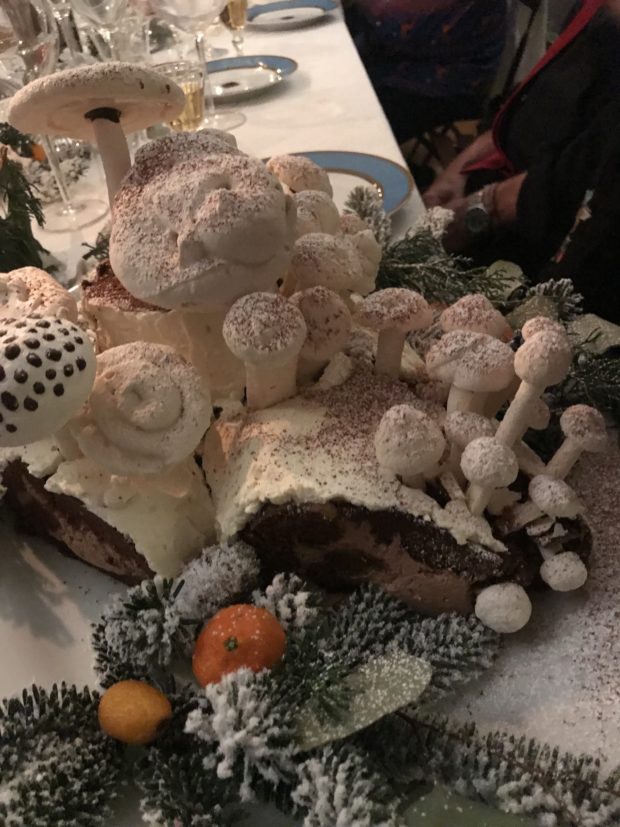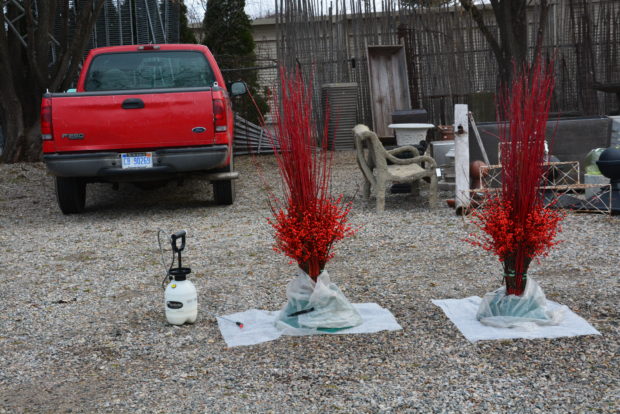 It is not hard to believe that we will be beginning our winter and holiday containers and decor in another week or so. The past 10 days have been an intense effort to unpack and display in the shop all of the materials Rob purchased almost a year ago for this season. Our kickoff open house begins November 7-just a few days away. I like this moment. It requires looking at countless individual materials with the idea to put them together in a way that makes visual and emotional sense. The beginning is always about fits and starts, with a liberal dose of hand wringing. What seemed like a good idea on Monday gives way to another idea on Tuesday. But eventually we all settle in to the job at hand, and the work of it evolves and gets done. It is the very best way to become familiar with what is available to include in winter arrangements. As I most likely was a gardener from the first moment I took a breath, of course I favor natural materials from that garden for the winter pots. Rob addresses that basic need with an incredible collection of fresh cut farmed twigs in a variety of species and sizes. They come from all over this country of ours. Densely branched bunches of lustrous alder branches-we carry them. Sumac and poplar branches harvested from our collective properties are so sculptural. The glossy cinnamon gold colored flame willow branches both straight and branched always arrive first, as their leaves are the first to drop. Soon to come are the pussy willow, the copper curly willow, and the red and yellow twig dogwood. The premium cut greens of all types are equally as juicy and lively. Pairing those branches and greens with berry stems for winter containers is a natural. The fresh cut branches of Michigan holly, ilex verticillata, are drop dead gorgeous. However, they come with a steep price, and require some serious prep, if they are to survive the season. The ilex berries above, zip tied to a stout stand of fresh cut first year growth red twig dogwood, need a thorough soaking with VaporGard prior to their installation. This agricultural grade natural anti dessicant formulated from pine resin will keep the berries attached to the stems, and plump – for months. The centerpieces pictured above went to a client willing to go the distance to have fresh cut berried stems in their pots.
It is not hard to believe that we will be beginning our winter and holiday containers and decor in another week or so. The past 10 days have been an intense effort to unpack and display in the shop all of the materials Rob purchased almost a year ago for this season. Our kickoff open house begins November 7-just a few days away. I like this moment. It requires looking at countless individual materials with the idea to put them together in a way that makes visual and emotional sense. The beginning is always about fits and starts, with a liberal dose of hand wringing. What seemed like a good idea on Monday gives way to another idea on Tuesday. But eventually we all settle in to the job at hand, and the work of it evolves and gets done. It is the very best way to become familiar with what is available to include in winter arrangements. As I most likely was a gardener from the first moment I took a breath, of course I favor natural materials from that garden for the winter pots. Rob addresses that basic need with an incredible collection of fresh cut farmed twigs in a variety of species and sizes. They come from all over this country of ours. Densely branched bunches of lustrous alder branches-we carry them. Sumac and poplar branches harvested from our collective properties are so sculptural. The glossy cinnamon gold colored flame willow branches both straight and branched always arrive first, as their leaves are the first to drop. Soon to come are the pussy willow, the copper curly willow, and the red and yellow twig dogwood. The premium cut greens of all types are equally as juicy and lively. Pairing those branches and greens with berry stems for winter containers is a natural. The fresh cut branches of Michigan holly, ilex verticillata, are drop dead gorgeous. However, they come with a steep price, and require some serious prep, if they are to survive the season. The ilex berries above, zip tied to a stout stand of fresh cut first year growth red twig dogwood, need a thorough soaking with VaporGard prior to their installation. This agricultural grade natural anti dessicant formulated from pine resin will keep the berries attached to the stems, and plump – for months. The centerpieces pictured above went to a client willing to go the distance to have fresh cut berried stems in their pots.
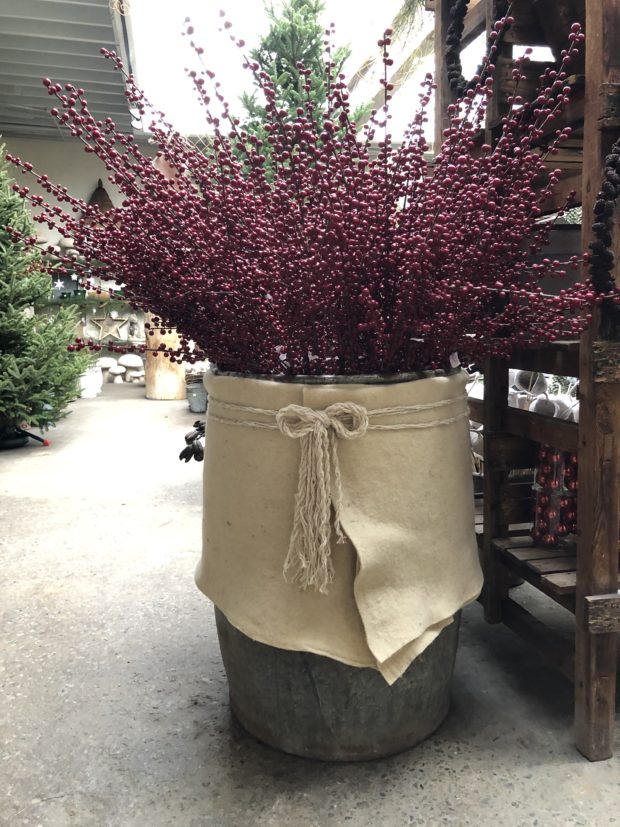 There are alternatives. The quality of the appearance and manufacture of faux berry stems has improved at an astonishing rate over the past 10 years. What used to be an embarrassing imitation of the real thing has become an entirely convincing expression of the beauty of berries. This new generation of faux berry stems are manufactured as much for durability as beauty. The color can be true enough to fool the eye. Or unabashedly dramatic. The stems do not disintegrate or discolor outdoors.
There are alternatives. The quality of the appearance and manufacture of faux berry stems has improved at an astonishing rate over the past 10 years. What used to be an embarrassing imitation of the real thing has become an entirely convincing expression of the beauty of berries. This new generation of faux berry stems are manufactured as much for durability as beauty. The color can be true enough to fool the eye. Or unabashedly dramatic. The stems do not disintegrate or discolor outdoors.
 There is an astonishing artistry that is evident, both in the design and construction. Though these stems are faux berry stems, the evidence of the human hand is obvious. These materials make it possible for me to construct winter arrangements that can handle gale force winds, endless snow and relentless cold. Packed away for the summer, they will be equally as beautiful in year two or three. Many of them that Rob purchases are tall enough to be seen from a good ways away. The berry picks pictured above are unabashedly cheery – the prefect antidote to the landscape going dormant.
There is an astonishing artistry that is evident, both in the design and construction. Though these stems are faux berry stems, the evidence of the human hand is obvious. These materials make it possible for me to construct winter arrangements that can handle gale force winds, endless snow and relentless cold. Packed away for the summer, they will be equally as beautiful in year two or three. Many of them that Rob purchases are tall enough to be seen from a good ways away. The berry picks pictured above are unabashedly cheery – the prefect antidote to the landscape going dormant.
 There is much to love about having choices in stem length, branching, and berry size. Choosing materials that are a proper proportion to the overall size of the arrangement is important. Do all picks need to be inserted into the soil or a dry floral foam base? No. If the perfect stem is not tall enough, they can be discretely zip tied to a neighboring natural branch. Picks with flexible branching permit an arrangement that is graceful.
There is much to love about having choices in stem length, branching, and berry size. Choosing materials that are a proper proportion to the overall size of the arrangement is important. Do all picks need to be inserted into the soil or a dry floral foam base? No. If the perfect stem is not tall enough, they can be discretely zip tied to a neighboring natural branch. Picks with flexible branching permit an arrangement that is graceful.
 Red berry picks destined for outdoor pots need to be completely weatherproof. It only took one time seeing red berries disintegrate and run red on the sidewalk to drive that point home. We test all of our picks by soaking them in water, even if we have been told they are weatherproof.
Red berry picks destined for outdoor pots need to be completely weatherproof. It only took one time seeing red berries disintegrate and run red on the sidewalk to drive that point home. We test all of our picks by soaking them in water, even if we have been told they are weatherproof.
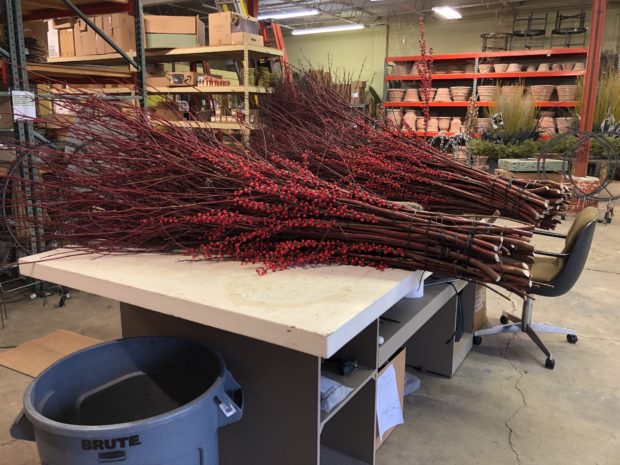 44 inch long red berry picks in concert with a mass of cut red twig dogwood branches will make a statement in a container all winter long. That red will be strikingly handsome set in a landscape renowned for its gray and brown. It could be I enjoy the winter pots better than any other season. They most certainly last the longest. I will take my own apart in March, mostly from the embarrassment of seeing the snowdrops and the berry picks at the same time.
44 inch long red berry picks in concert with a mass of cut red twig dogwood branches will make a statement in a container all winter long. That red will be strikingly handsome set in a landscape renowned for its gray and brown. It could be I enjoy the winter pots better than any other season. They most certainly last the longest. I will take my own apart in March, mostly from the embarrassment of seeing the snowdrops and the berry picks at the same time. 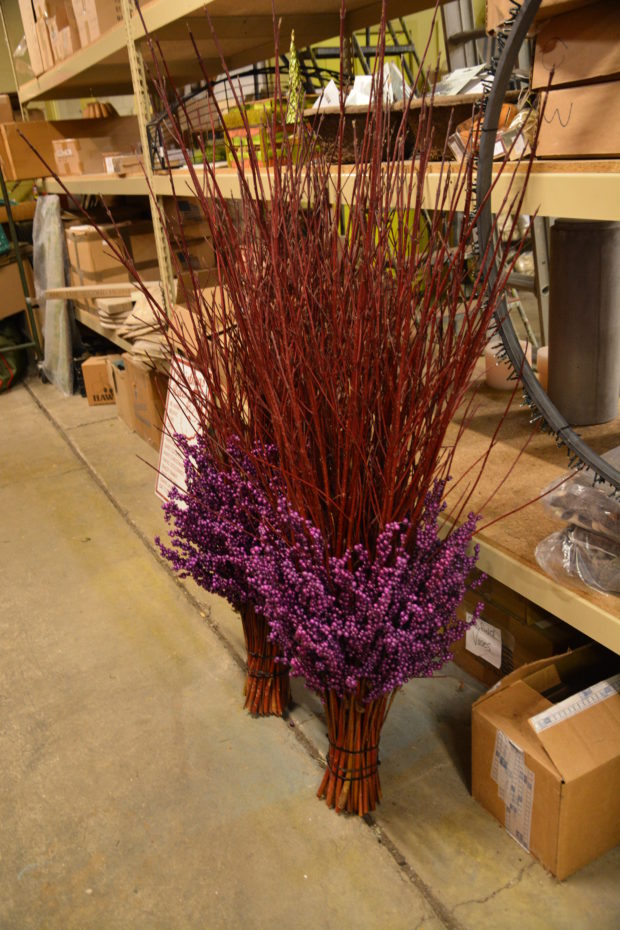 Red berry picks are the norm, but they are not the only game in town. It is great to be able to take your pick.
Red berry picks are the norm, but they are not the only game in town. It is great to be able to take your pick.
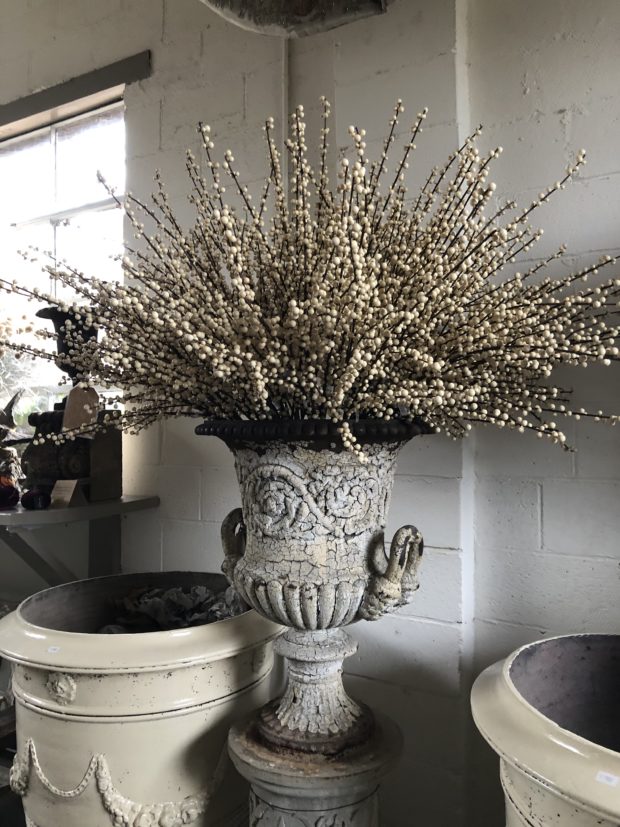 cream berries with brown stems
cream berries with brown stems
 I have yet to see a winter container that had too many berry picks, but even just a few adds a lot to the mix.
I have yet to see a winter container that had too many berry picks, but even just a few adds a lot to the mix.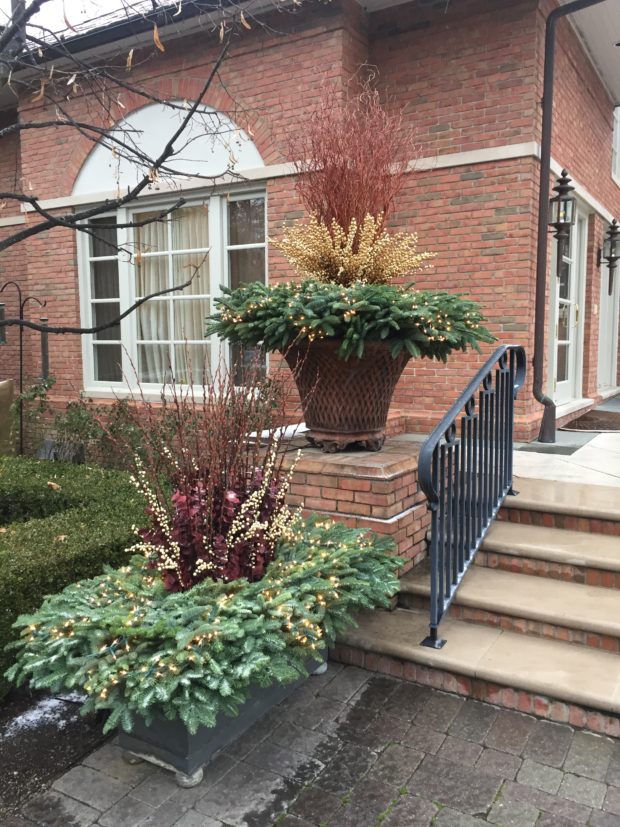 If a project calls for lots and lots of berries, sticking them individually is a better strategy than attaching them to the twig centerpiece. Once a centerpiece reaches a certain weight, keeping it perfectly upright will require additional ballast. Hand sticking berry stems is more time consuming, but it can provide a welcome intermediary layer between the vertical and horizontal elements. Winter pots can be the most challenging to create, as nothing will grow or fill in. The day they are done, they are done.
If a project calls for lots and lots of berries, sticking them individually is a better strategy than attaching them to the twig centerpiece. Once a centerpiece reaches a certain weight, keeping it perfectly upright will require additional ballast. Hand sticking berry stems is more time consuming, but it can provide a welcome intermediary layer between the vertical and horizontal elements. Winter pots can be the most challenging to create, as nothing will grow or fill in. The day they are done, they are done.
 Looking forward to the berries.
Looking forward to the berries.
